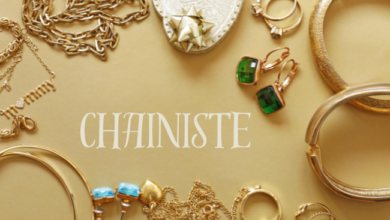What is Sapphire?
Definition and Overview
Chemical Composition
Sapphire is primarily composed of aluminum oxide (Al2O3). Trace elements such as iron, titanium, chromium, copper, or magnesium contribute to the gem’s color variations. The blue color is usually caused by iron and titanium impurities.
Varieties of Sapphire
While blue is the most common and sought-after color, sapphires come in a range of colors including pink, yellow, green, purple, and even colorless. These different colors are known as fancy sapphires.
History of Sapphire
Ancient Civilizations
Sapphires have been treasured for thousands of years. Ancient Persians believed the sky was painted blue by the reflection of sapphire stones. In ancient Rome and Greece, sapphires were associated with wisdom and purity.
Medieval Period
During the medieval period, clergy wore blue sapphires to symbolize Heaven. Royalty also favored these gemstones, believing they protected them from envy and harm.
Modern Times
In contemporary times, sapphires remain a symbol of nobility, truth, sincerity, and faithfulness. They are popular in engagement rings and other high-end jewelry.
Types of Sapphire
Blue Sapphire
The classic blue sapphire is prized for its rich, deep color. Kashmir sapphires, known for their velvety blue, are among the most valuable.
Pink Sapphire
Pink sapphires range from pale pink to vivid magenta. They are increasingly popular in modern jewelry for their vibrant and feminine hues.
Yellow Sapphire
Yellow sapphires vary from light yellow to a rich, golden color. They are often used in Vedic astrology and are believed to bring prosperity and success.
Star Sapphire
Star sapphires exhibit a star-like phenomenon known as asterism, caused by needle-like inclusions. The most famous star sapphire is the Star of India.
Padparadscha Sapphire
Padparadscha sapphires are exceptionally rare and valued for their unique salmon pink-orange color. The name derives from the Sinhalese word for lotus blossom.
The Formation of Sapphire
Geological Processes
Sapphires form under high-pressure, high-temperature conditions in metamorphic rocks or in igneous rocks like basalt. They can also be found in alluvial deposits, where they have been transported by water.
Locations and Mining
Sapphires are mined in several countries, including Sri Lanka, Myanmar, Madagascar, Thailand, Australia, and the United States. Each location produces sapphires with distinct characteristics.
Physical Properties
Hardness
With a hardness of 9 on the Mohs scale, sapphire is one of the hardest minerals, second only to diamond. This makes it highly resistant to scratches and ideal for everyday wear.
Color Variations
The presence of different trace elements leads to the wide color range of sapphires. Iron and titanium create blue sapphires, while chromium results in pink or red hues.
Clarity and Luster
Sapphires can vary in clarity, with inclusions common in natural stones. High-quality sapphires are transparent with excellent luster, reflecting light beautifully.
Uses of Sapphire
Jewelry
Sapphire is a popular choice for rings, necklaces, earrings, and bracelets due to its beauty and durability. It is often featured in engagement rings, symbolizing loyalty and trust.
Industrial Applications
Beyond jewelry, sapphires are used in various industrial applications. Synthetic sapphire is used in optical components, wristwatch crystals, and semiconductor wafers due to its hardness and transparency.
Sapphire in Jewelry
Rings
Sapphire rings, especially engagement rings, are highly coveted. The most famous sapphire ring is the one worn by Princess Diana, now Kate Middleton’s engagement ring.
Necklaces
Sapphire necklaces can range from simple pendants to elaborate statement pieces. They add a touch of elegance and sophistication to any outfit.
Earrings
Sapphire earrings, whether studs or drop designs, are timeless and versatile. They complement various styles and are suitable for both casual and formal occasions.
Bracelets
Sapphire bracelets can be delicate chains with sapphire accents or bold cuff designs. They are cherished for their beauty and the symbolism associated with the gemstone.
Famous Sapphires
The Star of India
The Star of India is one of the largest and most famous star sapphires in the world. It is known for its striking star-like pattern and is displayed at the American Museum of Natural History.
The Logan Sapphire
The Logan Sapphire, weighing 422.99 carats, is one of the largest faceted blue sapphires. It is part of the National Gem Collection at the Smithsonian Institution.
The Stuart Sapphire
The Stuart Sapphire is a historic gem that was once part of the British Crown Jewels. It has a fascinating history and is now set in the Imperial State Crown.
Sapphire Buying Guide
Evaluating Quality
When buying sapphires, consider the color, clarity, cut, and carat weight. The most valued sapphires have intense, vivid colors and high clarity.
Authenticity and Certification
Ensure the sapphire comes with a certificate from a reputable gemological laboratory. This guarantees its authenticity and provides information on its characteristics.
Price Determinants
The price of sapphire is influenced by its color, clarity, size, origin, and treatment. Untreated, natural sapphires are typically more valuable.
Caring for Sapphire Jewelry
Cleaning Methods
Clean sapphire jewelry with warm, soapy water and a soft brush. Avoid using harsh chemicals that could damage the stone or its setting.
Storage Tips
Store sapphire jewelry separately to prevent scratches. Use soft pouches or lined jewelry boxes to keep pieces safe.
Repair and Maintenance
Regularly check the settings of sapphire jewelry to ensure the stones are secure. Professional cleaning and inspection can help maintain their beauty.
Synthetic vs. Natural Sapphire
Identification Tips
Natural sapphires often have inclusions, while synthetic sapphires are typically flawless. A gemological report can help distinguish between the two.
Pros and Cons
Natural sapphires are unique and have intrinsic value, while synthetic sapphires are more affordable and available in larger sizes.
Myths and Legends
Cultural Significance
In many cultures, sapphires are believed to bring wisdom, protection, and good fortune. They are often used in talismans and religious artifacts.
Folklore and Superstitions
Folklore attributes various powers to sapphires, such as the ability to protect from envy and harm. They are also thought to bring clarity and insight.
Sapphire in Popular Culture
Celebrity Sapphires
Many celebrities wear sapphire jewelry, enhancing its popularity. Princess Diana’s engagement ring is one of the most famous examples.
Sapphires in Movies and Literature
Sapphires frequently appear in movies and literature, symbolizing luxury and royalty. They are often featured in stories of love and adventure.
Investing in Sapphires
Market Trends
Sapphire prices have been rising due to increasing demand and limited supply. Investing in high-quality sapphires can be lucrative.
Long-term Value
Sapphires have enduring value and are less volatile than some other investments. They are a stable choice for long-term investors.
Ethical Considerations
Sustainable Mining
Sustainable mining practices are essential to protect the environment and ensure fair labor conditions. Look for sapphires from sources committed to ethical practices.
Fair Trade Practices
Supporting fair trade ensures that miners and workers are paid fairly and work in safe conditions. Ethical sourcing is becoming increasingly important to consumers.
Sapphire vs. Other Gemstones
Sapphire vs. Ruby
While both are varieties of corundum, rubies are red due to chromium, while sapphires come in various colors. Rubies are generally more expensive.
Sapphire vs. Emerald
Emeralds are prized for their green color but are softer and more prone to damage than sapphires. Sapphires are more durable and come in a broader range of colors.
Sapphire vs. Diamond
Diamonds are the hardest known material and are traditionally used in engagement rings. Sapphires offer a colorful alternative with comparable durability.
Frequently Asked Questions
What is the most valuable color of sapphire? The most valuable color of sapphire is the deep blue hue, particularly those from Kashmir, known for their rich, velvety appearance.
How can I tell if a sapphire is real? To determine if a sapphire is real, look for natural inclusions under magnification and consider getting a certificate from a gemological lab.
Are synthetic sapphires worth buying? Synthetic sapphires are worth buying if you seek an affordable, high-quality gemstone without the rarity of natural sapphires.
What is a star sapphire? A star sapphire is a type of sapphire that exhibits a star-like phenomenon called asterism, caused by needle-like inclusions within the stone.
How should I care for my sapphire jewelry? Care for sapphire jewelry by cleaning it with warm, soapy water and a soft brush. Store it separately to avoid scratches and have it professionally inspected regularly.
Can sapphires be used in engagement rings? Yes, sapphires are a popular choice for engagement rings due to their beauty and durability. They symbolize loyalty and trust.
Conclusion
Sapphires are among the most cherished gemstones, celebrated for their stunning colors, historical significance, and durability. Whether used in fine jewelry or industrial applications, their appeal is undeniable. Understanding their various types, properties, and ethical considerations can help you appreciate and make informed decisions about this remarkable gemstone.


